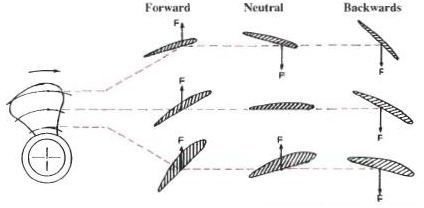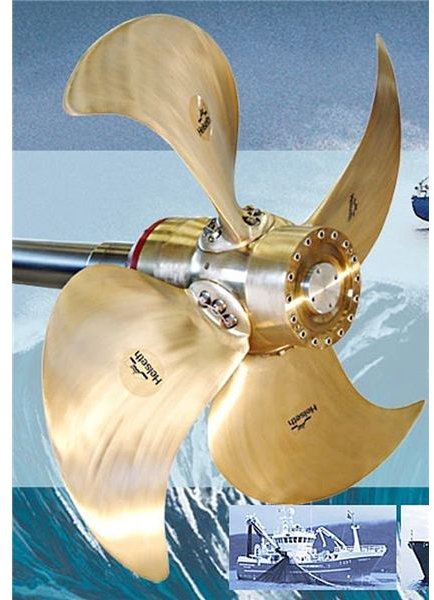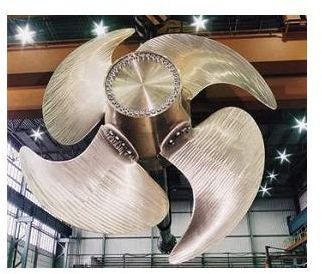Variable pitch propellers and their uses in marine engineering
Introduction
Generally propellers are of two types- Fixed Pitch Propellers( FPP) and Controllable or Variable Pitch Propellers( CPP). A FPP consists of fixed
blades. This means that the position of blades cannot be changed. On the Contrary, CPP can move its blade in the desired position by changing the pitch of the blades. So what difference does that make?
In FPP the power generated by the engine and the propulsive forces produced by the propeller cannot be controlled. This leads to high amount of power wastage and increased stresses on the propeller. But in a CPP all these can be prevented by just changing the pitch of the propeller. This function of CPP makes it an integral part of the propulsion system of a ship.
A striking aspect of a CPP is that the propeller rotates in only one direction, unlike FPP. Thus there is no need of a reverse clutch, which is an integral part of FPP for producing reverse thrust, in case the ship needs braking or reversing.
How Variable Pitch Propellers Work?
The mechanism that controls the blades movement is located in the boss of the propeller. This mechanism can be operated from both, the engine room and bridge, with the help of hydraulic cylinders. Incase the hydraulic system fails, the blades can be locked in the ahead position with the help of a locking device. Now let’s have a look as to how a ship can be propelled forward and backwards just by movement of the blades.

The diagram shows the cross section of blades. We will assume that the ship is moving in the ahead direction and the arrows shows the direction of the forces generated that pushes the ship forward. When the blade is at zero position, the propulsive forces acting on both the sides are equal in magnitude, but opposite in direction.Even though the net propulsive force is zero, the propeller absorbs a large amount of energy to convert it to wake turbulence. If the ship is to reverse, the blades are moved even further, this will result in a propulsive thrust in the forward direction, facilitating the ship to reverse.
The position of blades are adjusted according to the load of the ship.
Advantages of CPP
-
A CPP can operate with minimum or negligible loss in power. This helps to improve maneuverability of the vessel.

-
The direction from ahead to astern can be changed in a matter of few minutes or even seconds depending on the condition of the load of the ship. This not only helps to absorb all the power generated by the engine but also helps to prevent wastage of fuel.In some CPP the direction of the thrust can be changed within 15-40 seconds.
-
A CPP can also be connect to a shaft generator.
-
It can be used for a wide range of rotational speed.
Disadvantages of CPP
- The main disadvantage of CPP is that it is a highly complex system
- It is vulnerable due to numerous hydraulic components and sealing rings.As the sealing rings are outside the ship, damage of a single sealing ring can result in oil pollution.
- As the system is complex, repairs and maintenance is difficult.
Additional Features
A CPP can be connected to a Shaft generator. A shaft generator can supply power on the ship till the time the main engine is running. CPP can be used to maintain the frequency of the generator as the Engine moves on a constant rpm.
In case during the navigation time additional energy is needed, an auxiliary generator can be used to provide additonal power to the shaft generator. This is mainly used during maneuvering. If this is done, main engine should be disconnected from the reduction gear to prevent it from getting damage.
References
Ship Knowledge- A Modern Encyclopedia by K. Van Dokkum
Image Credits
https://www.nauticexpo.com/tab/pitch-propeller.html
https://www.fairplay-towage.com/data/faq/Pitch-Propeller.jpg
